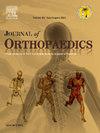内侧枢轴全膝关节置换术后活动范围改善和减少的预测因素:一项多中心回顾性分析
IF 1.5
Q3 ORTHOPEDICS
引用次数: 0
摘要
导言:与术前运动范围(ROM)相比,目前还没有研究确定内侧枢轴(MP)全膝关节置换术(TKA)术后运动范围(ROM)改善或缩小的预测因素。这项多中心研究旨在确定MP-TKA术后活动范围(ROM)改善的预测因素。研究纳入了在六个不同中心接受MP-TKA治疗膝骨关节炎的107名连续患者。研究收集了患者的年龄、性别、髋膝关节角度、术前术后伸屈ROM等数据。术后膝关节屈曲度提高或降低9°为阳性。根据术后一年膝关节屈曲度改善是否超过 9°(I 组;35 例患者)、变化是否在最小临床意义差异(MCID)范围内(M 组;54 例患者)或减少是否超过 9°(D 组;18 例患者),将患者分为三组。多变量和接收器操作特征曲线(ROC)分析表明,术前屈曲度小于 118.0°(曲线下面积(AUC):0.957,95 % 置信度)的患者术后一年后的屈曲 ROM 比术前小于 118.0°的患者术后一年后的屈曲 ROM 高:0.957,95% 置信区间(CI):0.924-0.990)是术后一年 ROM 改善的重要积极预后因素(几率比(OR):0.75,95% CI:0.66-0.85,P < 0.001),术前屈曲度大于 128.0°(AUC:0.899,95 % CI:0.836-0.961)是术后一年 ROM 下降的显著阳性预后因素(OR:1.讨论结果显示,术前膝关节屈曲 ROM 小于 118° 是 MP-TKA 术后膝关节屈曲 ROM 改善达到或超过 MCID 的显著阳性预测因子,而膝关节屈曲 ROM 达到或超过 128° 是术后一年膝关节屈曲 ROM 降低达到或超过 MCID 的显著阳性预测因子。本文章由计算机程序翻译,如有差异,请以英文原文为准。
Predictors of improved and decreased range of motion after medial pivot total knee arthroplasty: A multicenter retrospective analysis
Introduction
No study has identified predictors of improvement and decrease in postoperative range of motion (ROM) after medial pivot (MP) total knee arthroplasty (TKA) compared to preoperative ROM. This multicenter study aimed to identify predictors of improved postoperative range of motion (ROM) after MP-TKA.
Methods
The study included 107 consecutive patients who underwent MP-TKA for knee osteoarthritis at six different centers. Data on patient age, gender, hip knee angle, and pre- and postoperative ROM in extension and flexion were collected. A 9° improvement or decrease in postoperative knee flexion was considered positive. Patients were divided into three groups according to whether knee flexion improved by more than 9° (group I; 35 patients), changed within the minimal clinically important difference (MCID) (group M; 54 patients), or decreased by more than 9° (group D; 18 patients) one year after surgery.
Results
Significant differences in preoperative ROM for flexion were observed between the groups (P < 0.001). Multivariate and receiver operating characteristic (ROC) curve analyses revealed that preoperative flexion less than 118.0° (area under the curve (AUC): 0.957, 95 % confidence interval (CI): 0.924–0.990) was a significant positive prognostic factor for improved postoperative ROM one year postoperatively (odds ratio (OR): 0.75, 95 % CI: 0.66–0.85, P < 0.001) and that preoperative flexion greater than 128.0° (AUC: 0.899, 95 % CI: 0.836–0.961) was a significant positive prognostic factor for decreased postoperative ROM one year postoperatively (OR: 1.14, 95 % CI: 1.07–1.22, P < 0.001).
Discussion
The results showed that a preoperative knee flexion ROM of less than 118° was a significant positive predictor of an improvement in knee flexion ROM of MCID or greater after MP-TKA, and a knee flexion ROM of 128° or greater was a significant positive predictor of a decrease in knee flexion ROM of MCID or greater one year after surgery.
求助全文
通过发布文献求助,成功后即可免费获取论文全文。
去求助
来源期刊

Journal of orthopaedics
ORTHOPEDICS-
CiteScore
3.50
自引率
6.70%
发文量
202
审稿时长
56 days
期刊介绍:
Journal of Orthopaedics aims to be a leading journal in orthopaedics and contribute towards the improvement of quality of orthopedic health care. The journal publishes original research work and review articles related to different aspects of orthopaedics including Arthroplasty, Arthroscopy, Sports Medicine, Trauma, Spine and Spinal deformities, Pediatric orthopaedics, limb reconstruction procedures, hand surgery, and orthopaedic oncology. It also publishes articles on continuing education, health-related information, case reports and letters to the editor. It is requested to note that the journal has an international readership and all submissions should be aimed at specifying something about the setting in which the work was conducted. Authors must also provide any specific reasons for the research and also provide an elaborate description of the results.
 求助内容:
求助内容: 应助结果提醒方式:
应助结果提醒方式:


